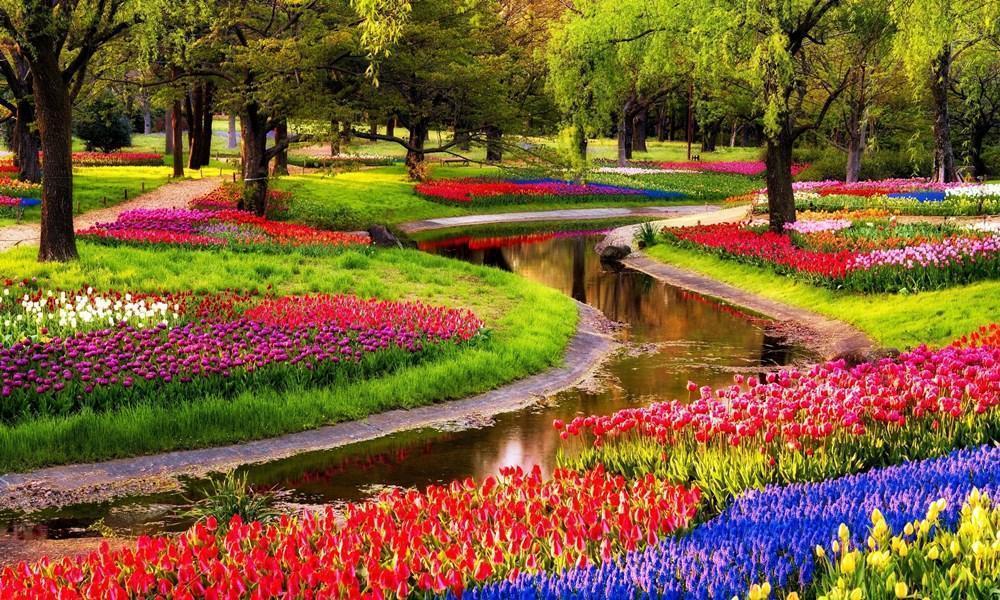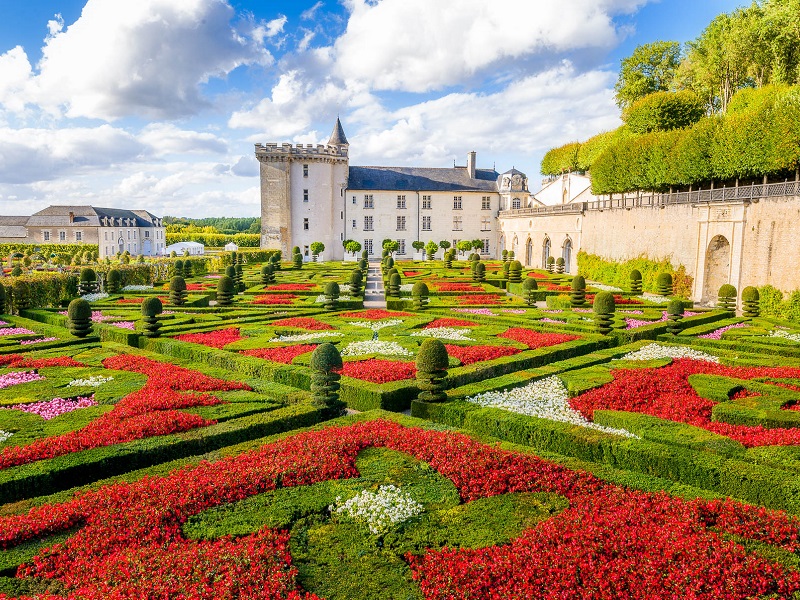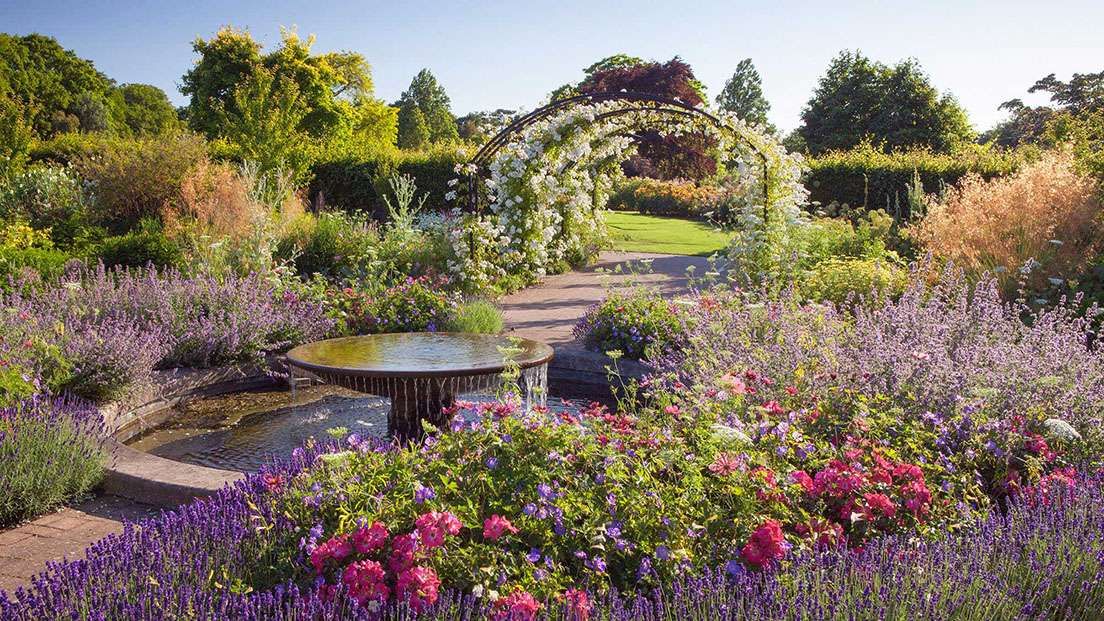Spring is in the air, and there’s no better time to explore the beauty of Europe’s gardens. From the vibrant tulips and daffodils to whimsical topiary, there’s no shortage of natural wonders to see. As someone who’s always been drawn to the magic of early spring blooms, I’ve made it my mission to visit gardens both near and far. Here are a few of my favorites: the mystical Alhambra Generalife Gardens in Spain, the stunning Schönbrunn Palace Gardens in Austria, the luxurious Versailles Gardens in France, the serene Boboli Gardens in Italy, the picturesque Keukenhof Gardens in the Netherlands, and the artistic Butchart Gardens in Canada. Each of these gardens showcases a unique style and ambiance, and together they provide the perfect itinerary for an unforgettable springtime adventure.
Keukenhof Gardens, Holland
Keukenhof, a show garden for the Dutch bulb producers, is one of the prettiest and most vivid spring gardens to visit. Because of this, it closes after eight weeks in mid-March. Spring flowering bulbs such as tulips, narcissus, and hyacinths are abundant in the site’s many flower gardens.
Keukenhof is located in the heart of the bulbfield district, which is characterised by a jumble of fields in a variety of colours. The terrain features a number of windmills, just right for recreating the stereotypical image of Holland that features tulips and windmills.

Generalife, Granada, Spain
The Alhambra Palace is among Europe’s most impressive Moorish buildings. You can find the Generalife Gardens just next to the palaces. The gardens are an excellent illustration of the Islamic concept of depicting paradise through the use of water features.
Despite the large number of visitors, the Generalife’s gardens remain peaceful because to their many fountains, ponds, and rills. In addition to all of the amenities, there are also fragrant flower gardens. Walls are adorned with bougainvillaea and wisteria, and roses and other floral plants embellish the gardens in quiet courtyards.
Tickets are limited each day, so it is recommended to purchase them in advance online to avoid disappointment. Come early in the summer for the greatest weather and crowds.

Claude Monet’s Garden, Giverny, France
Claude Monet, an Impressionist, once said that his garden in the French village of Giverny was his best work. The lily ponds that frequently appear in his gardens are what bring him the most fame. The gardens were planned by him to have year-round colour.
Monet’s garden served as a source of inspiration for his paintings, which often depict the changing of the seasons and the effects of light. His well-known ‘lilies’ series reflects his interest in colour and illumination.
Which flowers you wish to see will determine the optimum time to go. Spring and early summer are my favourite times of year.

Chateau Villandry, Loire, France
The Loire Valley is well-known for its numerous Chateaux, many of which feature beautiful gardens. we wanted to see a good example of French Renaissance formal gardens, and the ones at Chateau Villandry fit the bill. In total, there are six symmetrical formal gardens to explore.
A formal vegetable garden is laid out in a series of nine squares; there is also a water garden with fountains and ponds; and an attractive garden with trimmed box hedges making complicated patterns and filled with flowering plants according to the season. The attractive vegetable garden is the most well-known of the six gardens here.
It’s most pleasant during the summer months.

Tresco Abbey Gardens, Isles of Scilly, UK
The Tresco Abbey Gardens enjoy its own microclimate thanks to protective walls, consistent temperatures, and ample sunlight. Plants from every continent except Antarctica flourish in this climate. Private gardens were established in the location of a defunct Benedictine monastery.
With its abundance of flora, it is often compared to Kew Gardens, albeit without the famous glasshouses. Ahead of the rest of Cornwall, flowering plants and bushes appear in the spring, while autumn weather persists long into winter. During the winter solstice, it is reported that 300 different plant species are in bloom.

Kew Gardens, London, UK
Kew Gardens, unlike its name suggests, is both a research institution and a botanical garden of international repute. The establishment’s glasshouses, built during the time of Victorian plant hunters, honour that history. However, it has not lagged behind the times; the treetop walkway and the Princess of Wales Conservatory are just two examples of modern architecture.
Gardens and borders are also abundant with plants and shrubs in addition to the numerous plant collections kept in the conservatories and the famed glasshouses. Kew is a garden that may be enjoyed year-round, but its splendour truly shines in the warmer months.

The RHS Gardens, England
The Royal Horticultural Society is responsible for four gardens located in different regions of the United Kingdom. While each offers something unique, they share the goal of being interesting throughout the year.
The stunning varied borders, woods, and rock gardens at Wisley in Surrey have made it famous. The Hot Garden and fragrant rose collection at Rosemoor in Devon are famous. Hyde Hall, located in Essex, is notable for its expansive views and its Dry Garden. Fine examples of nature meadows, forests, and magnificent borders can be seen at Harlow Carr in North Yorkshire.
In Europe, you can choose from among thousands of beautiful gardens. Beautiful gardens are a point of pride for many manor houses, chateaux, and palaces. While many large urban parks were once rural gardens, others were much more formal in their attempts to tame nature.

Conclusion
The European garden provides a captivating experience for visitors, enticing them with its immaculate landscape and stunning floral arrangements. Every corner of this garden boasts an unparalleled level of serenity and beauty, transporting viewers to a whole new world. As you walk through the garden’s winding paths, you’ll notice its blending of natural and manmade elements. The garden’s water features, benches, and gazebos are carefully placed amidst the myriad of flowers, creating the perfect escape for relaxation and reflection. In conclusion, the experience of exploring the European garden is akin to discovering a hidden gem amidst a bustling city. Its calming ambiance will leave you feeling refreshed, rejuvenated, and eager to return once more.

